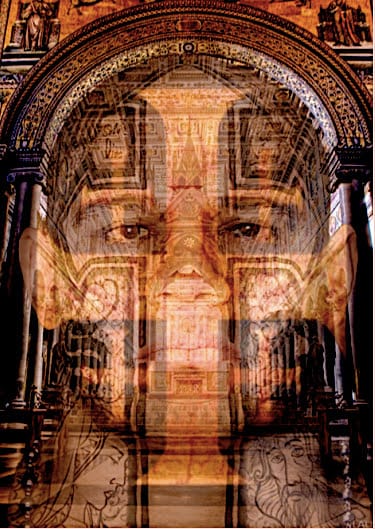Unmasking the Harmful Parallel Cultures of Celtic Colours Board of Directors and Acadian Oligarchs
Toxic culture uncovered at Celtic Colours is not unique. It mirrors the same dynamics within the Acadian heritage patrimonial industry Oligarchs.

Celtic Colours International Festival: Unveiling a Toxic Culture on Cape Breton Island, all the way to Acadian Oligarch culture
Since its inception in 1997, the Celtic Colours International Festival has been a hallmark of October traditions on Cape Breton Island, celebrating its rich Celtic heritage through music, dance, and art. However, beneath the vibrant performances and cultural festivities lies a story of systemic dysfunction endemic these days. The festival recently fired its entire board of directors, shocking the local and artistic communities. The catalyst? A toxic work culture that stifled innovation, hindered actionable progress, and prioritized power egos over the festival’s mission to advance Cape Breton’s cultural legacy.

The Fall of the Celtic Colours Board: Egos Over Action
The decision to dissolve the board of directors was not made lightly. For years, whispers of dysfunction permeated the festival’s inner circles. Many artists, volunteers, and cultural advocates cited a toxic atmosphere dominated by an entrenched executive committee. This group, described as egocentric and self-serving, fostered an environment where forward-thinking ideas were dismissed, and actionable initiatives were stymied. The festival’s mission to celebrate and preserve Cape Breton’s Celtic culture became secondary to internal power struggles.
Insiders described the board’s leadership style as a "my way or the highway" approach, where dissenting voices were silenced and collaboration was non-existent. Such an insular mindset prevented meaningful dialogue with artists and cultural stakeholders, leaving the festival stuck in a repetitive cycle of mediocrity. The board's firing marks a critical step towards rebuilding an organization capable of driving cultural innovation and inclusivity.
Parallels in the Acadian Heritage Patrimonial Industry
The toxic culture uncovered at Celtic Colours is not unique. It mirrors the dynamics within the Acadian heritage patrimonial industry, dominated by a clique of ten ruling oligarchs. These individuals wield disproportionate influence over cultural narratives, leveraging their positions to maintain control over funding, programming, and public discourse.
Described as arrogant and unaccountable, these oligarchs operate within walled gardens, refusing to engage with voices outside their echo chambers. Their self-serving agendas prioritize personal gain over the broader cultural enrichment of the Acadian community. The consequences are dire in rural areas like Clare and Argyle, where many working-class Acadians reside. Poverty and systemic neglect leave these communities powerless to challenge the oligarchs’ dominance, perpetuating a cycle of cultural stagnation and disenfranchisement.
The impact of this toxic culture is evident in the homogenization of Acadian representation. Organizations such as the Federation acadienne de la Nouvelle-\u00c9cosse (FAN) and Halifax-centric entities like Bell Media Inc., CTV Atlantic promote superficial narratives of inclusion while sidelining authentic Acadian voices. This exclusionary approach accelerates the cultural assimilation of Acadian traditions, eroding their distinct identity in the face of broader Atlantic Canadian media control.
Hope for Change: Voices of Resistance
Amid this bleak landscape, there is a glimmer of hope. A small but growing group of cultural advocates and artists are challenging the status quo, calling out toxic practices, and demanding change. Among them is contemporary artist Claude Edwin Theriault, whose work exemplifies a commitment to forward-thinking action and cultural authenticity.
Theriault’s multidisciplinary projects blend traditional Acadian narratives with modern technology, creating innovative platforms that amplify marginalized voices. By bypassing traditional gatekeepers and leveraging self-publishing and digital channels, Theriault embodies a new model of cultural empowerment. His efforts to expose and critique the oligarch-driven heritage industry highlight the need for systemic change, inspiring others to question and dismantle entrenched power structures.
Towards an Inclusive Acadian Culture
The events at Celtic Colours and the broader issues within the Acadian patrimonial industry serve as a wake-up call. To reverse the tide of cultural assimilation and foster a thriving, inclusive Acadian identity, several steps are essential:
- Accountability and Transparency: Organizations must adopt governance models prioritizing accountability, inclusivity, and collaboration. This includes creating platforms for diverse voices to be heard and actively engaging with underrepresented communities.
- Empowering Grassroots Movements: Supporting local artists, cultural workers, and advocates can help break the cycle of oligarchic control. Grassroots initiatives that prioritize community-driven narratives can serve as catalysts for meaningful change.
- Reclaiming Media Narratives: Challenging the dominance of Halifax-centric media and promoting independent storytelling platforms is crucial to counteract cultural homogenization. By decentralizing media representation, Acadian voices can regain visibility and authenticity.
- Investing in Rural Communities: Addressing poverty and systemic neglect in areas like Clare and Argyle is essential to empower these communities to participate in cultural preservation and innovation.

The downfall of the Celtic Colours board and the growing resistance against the Acadian heritage oligarchs signify the beginning of a larger cultural reckoning. By confronting toxic cultures and embracing forward-thinking leadership, Cape Breton and Acadian communities can chart a new course toward cultural vitality and resilience.

FAQ:
What is the focus of this website?
This website explores the harmful cultures within the Celtic Colours Board of Directors and French Acadian oligarchs. It provides an in-depth analysis of how these dynamics affect cultural representation and innovation on Cape Breton Island and within the Acadian community.
Who is the target audience for this website?
The website aims to reach Atlantic Canada's French Acadian communities. It serves as a platform to discuss cultural challenges and promote engagement with local issues that impact these communities.
Why is the Celtic Colours Festival's internal culture significant?
The Celtic Colours Festival's internal culture is significant due to its impact on Cape Breton's cultural landscape. The website encourages a more inclusive and innovative cultural dialogue in the region by addressing systemic dysfunctions within the board of directors.
What issues are French Acadian communities facing?
French Acadian communities grapple with oligarch-dominated narratives that stifle authentic cultural expression. The website highlights these issues and advocates for systemic changes to foster diversity and inclusion in cultural narratives.
How does this website support cultural advocacy?
The website catalyzes cultural advocacy by shedding light on power imbalances and advocating for grassroots movements. It emphasizes community-driven narratives to inspire action and change within Acadian and Celtic cultural circles.
Why is it important to challenge media narratives in Atlantic Canada?
Challenging media narratives in Atlantic Canada is crucial to prevent cultural homogenization. The website advocates for decentralized media representation to ensure French Acadian voices are acknowledged and their cultural heritage preserved.
What role does contemporary art play in cultural change?
Contemporary art, as showcased by artists like Claude Edwin Theriault, plays a pivotal role in cultural change. By blending traditional and modern elements, contemporary art challenges entrenched power structures and promotes innovative artistic expression.

